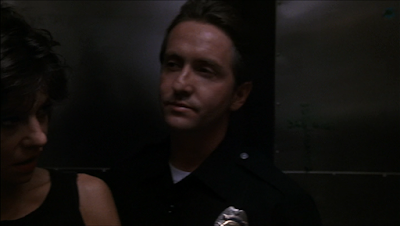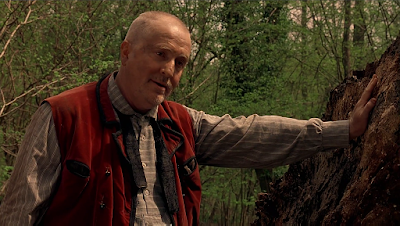Mission: Impossible - Rogue Nation
![]() Music composed and conducted by Joe Kraemer
Music composed and conducted by Joe KraemerMission: Impossible Theme by Lalo Schifrin
Music orchestrated by Matt Dunkley
Music recorded at Abbey Road Studios, British Grove
Album running time: 73 minutes
Available on La-La-Land Records
(Album exclusive tracks marked with *)
It's been a few years since we've seen Ethan Hunt and his IMF team in Mission: Impossible - Ghost Protocol(2011). Being the best in the series, that film is hard to top. The franchise has seen an interesting group of composers from Danny Elfman’s Mission: Impossible (1996), Hans Zimmer’s Mission: Impossible 2(2000), to Michael Giacchino’s Mission: Impossible III (2006) and Ghost Protocol (2011).
Relative scoring newcomer Joe Kraemer steps up to the plate, after working with director-writer Christopher McQuarrie and Tom Cruise on Jack Reacher (2012). Kraemer’s score has a retro feel, using a completely orchestral palette. Kraemer also weaves the Schifrin main TV theme (MI Theme), and the TV theme “The Plot” into the score and his own Ethan Hunt theme. Other main themes include one for the baddies, The Syndicate, as well as turning the melody of Puccini’s Nessun Dorma into a leitmotif for the vixen, Ilsa Faust.
The A400 accompanies the opening larger-than-life plane stunt, setting up variations of Schifrin’s MI Theme. The Plot theme makes an appearance among hints of Ethan’s theme as the suspense builds to a full main titles statement of the MI theme.
Solomon Lane introduces the theme for our villain, a snake-like theme for the flute and woodwind section. The theme grows and expands throughout the track with an almost hypnotic snake charmer feel. Good Evening, Mr. Hunt builds more suspense with a brief nod to the Schifrin theme. The brass enter with a large sting as Solomon Lane’s theme appears near the end.
Escape to Danger starts the spy sound with ticking percussion and large orchestral hits and keeps it up without losing steam. There are slight variations of Schifrin, so it can feel like it is part of the fabric of the score. There is also flute solo of Nessun Dorma snuck in, which of course plays a larger part in the next few sequences. Kraemer sets up Havana to Vienna with a Cuban flavor and Schifrin quotes. The tremolo strings and ticking percussion continue, this time with a reference to The Plot and Solomon Lane’s themes. A Flight At The Opera keeps the action going in this sequence with the brass and strings taking charge. There are some quotes of Schifrin and Ethan’s theme almost connected together.
The Syndicate begins with Lane’s theme in a shadowy setting until the Mission Impossible trill appears and sets up The Plot theme (with a really interesting Middle Eastern variation). The Plan brings us the classic spy sound, blending the Schifrin style and Ethan’s theme. We get a lot of nice suspense music continuing into It’s Impossible*, a short cue featuring Lane’s theme spread among several instruments. The cue ends with a brief statement of Schifrin’s main theme.
The Torus, while not fully appearing in the film, is a great action cue. Featuring several past themes (The Plot, Ethan’s theme, MI theme), the rhythm propels the track without being over the top or too busy. The track stays under the radar until the last section where it has a strong finish. The main themes get expertly mixed in again in Morocco Pursuit– a much stronger and highly energetic action cue.
Grave Consequences returns us to the quieter, suspense-filled sound, with flute solos of MI theme and Lane’s theme making appearances. A section of dissonance leads to a propulsive string section and Ethan’s theme. Ethan’s theme starts off A Matter of Going, with a quiet reprise of Lane’s theme before one of the prominent versions of the Nessun Dorma theme for Ilsa.
The Blenheim Sequence contains some nice variations of Schifrin’s theme and new harmonies attached to Ethan’s theme. Starting quietly, Audience With the Prime Minister adds Lane’s sinister theme but rises for bold and exciting statements of the MI theme and Ethan’s theme. This Is the End, Mr. Hunt* reprises several past themes (including plenty of statements of The Plot and Ethan’s theme) and crescendos to a big finish.
A Foggy Night in London starts out as a strong action sequence for the film’s climax. There are few fun percussion solos and thrilling brass and string writing. Meet the IMF starts with a bold statement of the MI theme, and a rousing version of Ethan’s theme – now really representing the IMF itself. It’s a short cue, but is effective. Finale and Curtain Call recalls the Nessun Dorma theme and a classic reprise of the Mission: Impossible theme. In a semi-suite, Kraemer returns to several bits of music heard earlier in the score before ending with one last Mission: Impossible theme.
It’s been a strong year for spy scores: Spy (Theodore Shapiro), The Man from UNCLE (Daniel Pemberton), Kingsman (Henry Jackman), and an upcoming Bond film. Kraemer really delivers in this spy genre. Utilizing Schifrin’s material is a must, both Elfman and Giacchino handled it well. Kraemer has it really woven into his score, and it sometimes blends in so well, it’s hard to tell where one composer ends and begins. The opera scene in Vienna is set to the opera Turandot and Nessun Dorma (one of the most famous opera arias) is closely connected to the scene’s plot but it is interesting that Kraemer used Giacomo Puccini’s music as a leitmotif for Ilsa. While it makes several appearances in the film, it never is too obtrusive.
While Michael Giacchino’s score was big on musical action, Kraemer really gets the quieter moments in addition to the action set-pieces. Many cues aren’t densely orchestrated, but have just enough momentum to keep it going. It really is a thoughtfully crafted score, and it noticeable in the theaters, and even more so on the album. I hope this work brings Kraemer more success and more recognition.




































































































































































































